What is CNC Machining

CNC Machining
What Is CNC Machining?
Welcome to Durite Screw's guide to CNC machining. In this comprehensive overview, we will explore the history of CNC machining, its current applications, and future trends shaping the industry
History Of CNC Machining
The roots of CNC (Computer Numerical Control) machining can be traced back to the late 1940s and early 1950s when the first numerical control (NC) machines were developed. These early machines used punched tape cards to control the movement of machine tools, revolutionizing the manufacturing industry by automating processes and improving accuracy.
The advent of computer technology in the 1960s and 1970s led to the development of CNC machining as we know it today. With the introduction of computerized controls and programming languages, such as G-code, CNC machines became more versatile, precise, and efficient. This technological advancement enabled manufacturers to produce complex parts with greater speed and accuracy, opening up new possibilities in various industries.
The versatility of CNC machining enables manufacturers to produce prototypes, custom components, and high-volume production runs with consistent quality and precision. Advanced technologies, such as multi-axis machining, Swiss CNC machining, and 3D printing, have further expanded the capabilities of CNC machines, making them indispensable tools in today's competitive marketplace.
Why US
Where CNC Machining Is Today
Today, CNC machining plays a vital role in modern manufacturing across a wide range of industries, including aerospace, automotive, electronics, medical, and more. CNC machines use computerized controls to precisely guide the movement of cutting tools, lathes, mills, and other equipment, allowing for the accurate fabrication of parts from various materials, such as metal, plastic, wood, and composites.
CNC Machining
Where CNC Machining is Going
As technology continues to evolve, so too does the field of CNC machining. Future trends in CNC machining are expected to focus on automation, connectivity, and sustainability.
Automation
The integration of robotics and artificial intelligence (AI) into CNC machining processes will enhance productivity, reduce labor costs, and improve overall efficiency. Automated systems will enable continuous operation, lights-out manufacturing, and real-time monitoring of production processes.
Connectivity
Industry 4.0 initiatives are driving the adoption of smart manufacturing technologies, including IoT (Internet of Things) devices, cloud computing, and data analytics, to create interconnected, data-driven manufacturing ecosystems. CNC machines will be integrated into networked environments, enabling remote monitoring, predictive maintenance, and optimized production scheduling.
Sustainability
Environmental concerns and regulatory requirements are driving the development of sustainable manufacturing practices, including the use of eco-friendly materials, energy-efficient processes, and waste reduction strategies. CNC machining will continue to play a crucial role in sustainable manufacturing by enabling precise material utilization, minimizing scrap, and optimizing resource efficiency.
In conclusion, CNC machining has come a long way since its inception, revolutionizing the manufacturing industry and shaping the future of production. From its humble beginnings as a tool for automating machine processes to its current status as a cornerstone of modern manufacturing, CNC machining continues to evolve and innovate.
With advancements in automation, connectivity, and sustainability, CNC machining is poised to remain at the forefront of manufacturing for years to come. Stay tuned as Durite Screw continues to push the boundaries of CNC machining technology and deliver cutting-edge solutions to our valued customers.
